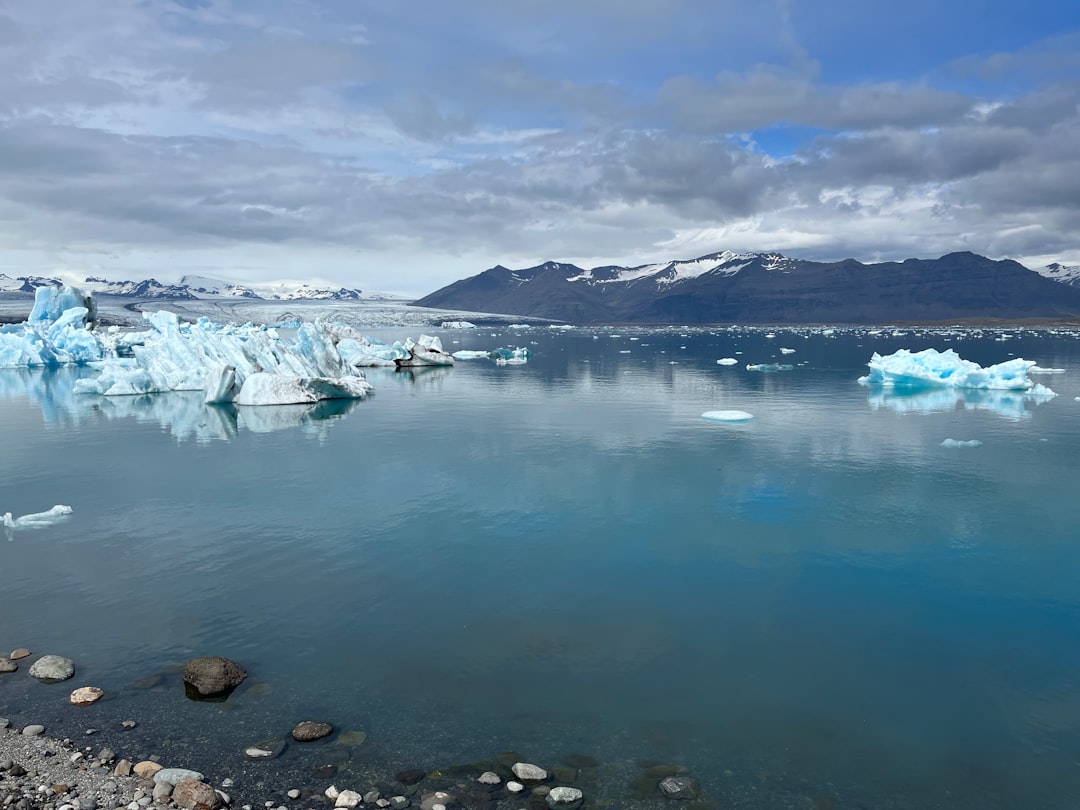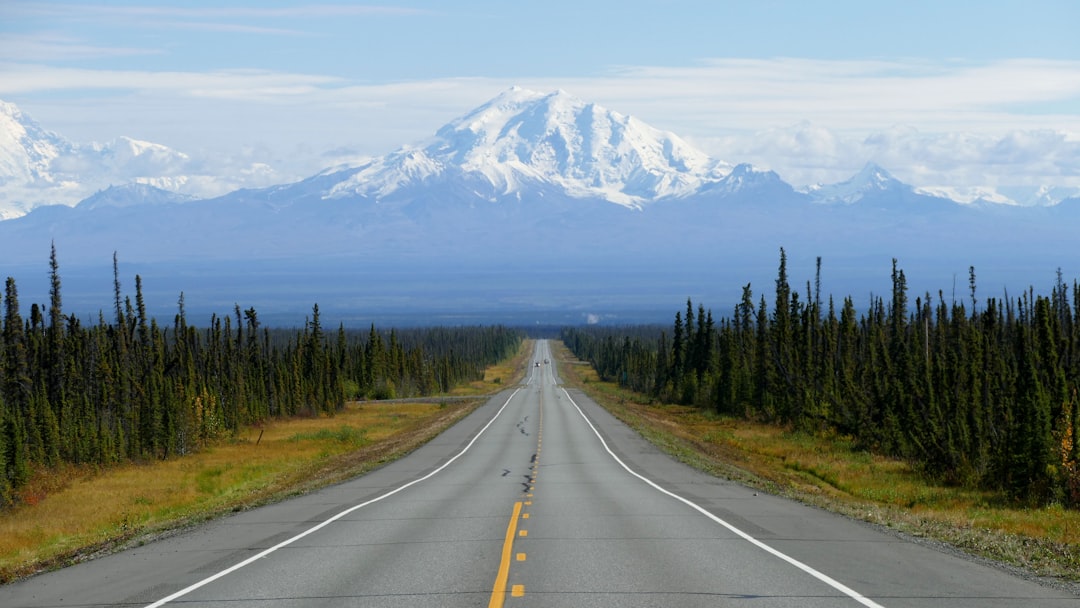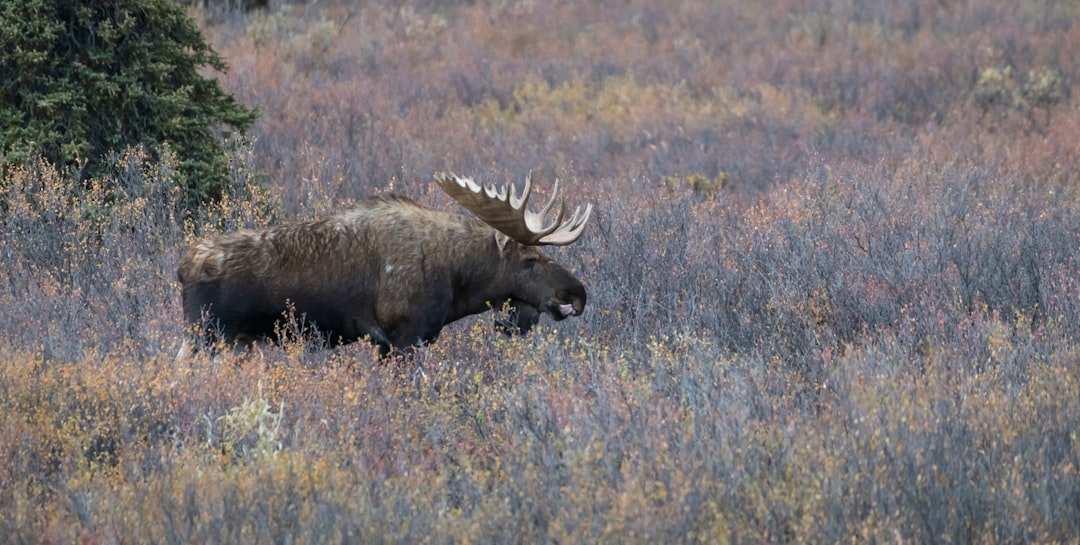Spot Bears, Whales, and More on the Ultimate Alaskan Wildlife Adventure
Spot Bears, Whales, and More on the Ultimate Alaskan Wildlife Adventure - Watch Brown Bears Fish for Salmon at Katmai National Park

Of all the incredible wildlife experiences Alaska has to offer, few compare to observing brown bears fish for salmon at Katmai National Park. Located on the Alaska Peninsula about 290 miles southwest of Anchorage, Katmai is famous for its bear viewing opportunities at Brooks Camp along Naknek Lake. From late June through early September, hundreds of brown bears descend on the area to feast on salmon running upstream to spawn. It's a prime opportunity to see these majestic animals in their natural habitat.
As the salmon swim upstream, they congregate near Brooks Falls to attempt the leap over the rushing waters. Perched atop the falls, the brown bears wait patiently to snatch their prey straight from the water. You'll be amazed watching the bears' lightning-quick reflexes as they nab jumping salmon right out of the air with their powerful jaws. At times, dozens of bears jostle for the best fishing spots on the falls, making for incredible photo opportunities.
While bear viewing stands provide a safe vantage point, Katmai also offers guided ranger walks for a more immersive experience. Veteran park rangers will take you down within 50 yards of the bears to observe their fishing behaviors and interactions up close. As the dominant bears take over the prime fishing spots, younger bears often wait downstream to pick off the weakened salmon that make it through.
Seeing the sheer quantity of salmon the bears can consume is astounding. Large males may eat over 30 salmon per day during peak season, building up the fat reserves to sustain them through the long winter hibernation. Watching a lucky bear carry its catch into the woods for a secluded meal is a special treat.
In addition to the famous falls, Brooks Camp features an expansive network of raised bear viewing platforms connected by boardwalks. These vantage points allow visitors to observe bears fishing at riffles throughout the river, where salmon also congregate. Don't be surprised to see bears foraging on the shoreline or even napping beneath the platforms after a big meal.
While bear viewing is the main attraction, Katmai National Park also rewards visitors with pristine wilderness, active volcanoes, and abundant wildlife. Hiking trails deliver spectacular views of the surrounding mountains and Naknek Lake. With a little luck, you may even spot moose, caribou, wolves, or even wolverines.
What else is in this post?
- Spot Bears, Whales, and More on the Ultimate Alaskan Wildlife Adventure - Watch Brown Bears Fish for Salmon at Katmai National Park
- Spot Bears, Whales, and More on the Ultimate Alaskan Wildlife Adventure - See Orcas Breach Off the Shores of Glacier Bay
- Spot Bears, Whales, and More on the Ultimate Alaskan Wildlife Adventure - Spot Moose and Caribou on a Drive Through Denali National Park
- Spot Bears, Whales, and More on the Ultimate Alaskan Wildlife Adventure - Go Whale Watching in Resurrection Bay Near Seward
- Spot Bears, Whales, and More on the Ultimate Alaskan Wildlife Adventure - Hike to See Puffins and Sea Lions in the Aleutian Islands
- Spot Bears, Whales, and More on the Ultimate Alaskan Wildlife Adventure - Kayak Among Icebergs and Harbor Seals in Prince William Sound
- Spot Bears, Whales, and More on the Ultimate Alaskan Wildlife Adventure - Observe Caribou Migration in the Arctic National Wildlife Refuge
- Spot Bears, Whales, and More on the Ultimate Alaskan Wildlife Adventure - Photograph Grizzlies at McNeil River State Game Sanctuary
Spot Bears, Whales, and More on the Ultimate Alaskan Wildlife Adventure - See Orcas Breach Off the Shores of Glacier Bay

Of all the incredible marine wildlife experiences Alaska offers, few compare to witnessing the majestic orcas of Glacier Bay National Park. Located about 60 miles northwest of Juneau, Glacier Bay provides an unparalleled opportunity to observe these magnificent killer whales patrolling the rich waters of the bay. From May through September, multiple orca pods frequent the bay, delighting visitors with their acrobatic breaching displays as they hunt for prey.
Getting the chance to see orcas breach clear out of the water is a remarkable privilege. As the sleek black-and-white bodies launch into the air in graceful arcs, time seems to stand still for a moment. You'll be mesmerized watching the orcas propel their 6-8 ton bodies fully airborne before splashing down in an explosion of foam. Researchers believe breaching serves multiple purposes for orcas, including communication, dislodging parasites, and stunning prey with the dramatic aerial moves.
Visitors rave about witnessing the orcas' natural behaviors from aboard a whale watching cruise in Glacier Bay. Experienced captains know the best spots to find the whales and safely position the boat for prime viewing. While luck is always a factor with wildlife sightings, Glacier Bay is one of the most reliable places worldwide to encounter orcas due to the abundant food sources. Watching the coordinated movements of the orca pods as they corral schools of fish is an awe-inspiring experience.
In addition to breaching, the orcas of Glacier Bay exhibit other spectacular hunting techniques like spyhopping, tail slapping, and lunge feeding. Getting to observe these behaviors up close, set against the stunning backdrop of the bay's tidewater glaciers, creates an unforgettable Alaskan adventure. Having knowledgeable guides on board enhances the experience by providing context around the whales' habits and answering questions.
While orca encounters take center stage, whale watching cruises in Glacier Bay also provide opportunities to see humpback whales, sea otters, porpoises, seals, and seabirds. And when the whales aren't around, there's always the calving glaciers, towering mountains, and pristine coastal scenery to marvel at. With only a limited number of vessels permitted to operate in the bay each day, the whale watching excursions have an intimate, exclusive feel.
Spot Bears, Whales, and More on the Ultimate Alaskan Wildlife Adventure - Spot Moose and Caribou on a Drive Through Denali National Park

Of all the iconic wildlife in Alaska, few capture the imagination like the massive moose and migrating caribou that roam Denali National Park. Getting the chance to spot these incredible animals in their natural habitat is a once-in-a-lifetime experience for many visitors. Unlike zoos or confined safari parks, Denali gives you the opportunity to view moose and caribou roaming free across their subarctic tundra ecosystem.
One of the best ways to maximize your odds of sighting moose and caribou is to take a narrated tundra wildlife tour, offered by the park's experienced concessionaires. These knowledgeable guides will utilize their extensive experience tracking wildlife movements to take you into prime moose and caribou viewing areas. While sightings are never guaranteed, visitors rave about the amazing proximity to these majestic creatures they've achieved on the tundra tours.
According to recent travelers, some of the most memorable moose sightings occur near the East Fork River or Polychrome Pass. Bull moose weighing over 1,500 pounds feed on willows and pond vegetation alongside the roadway. You'll be amazed viewing these enormous animals with huge palmate antlers nearly six feet across. Cow moose with calves are also frequently spotted. Visitors love capturing photos of the young calves, with their long, wobbly legs and fuzzy coats.
In addition to moose, the tundra tours provide opportunities to see large herds of caribou, especially during the late summer migration. Hundreds of thousands of caribou travel through Denali on their way to winter grounds. Witnessing these vast numbers crossing rivers and trails on their ancient migration route is a breathtaking experience. The clicking of their hooves and antlers clashing makes for a primal Alaskan soundtrack.
Spot Bears, Whales, and More on the Ultimate Alaskan Wildlife Adventure - Go Whale Watching in Resurrection Bay Near Seward
Of all Alaska's wildlife wonders, few experiences compare to setting sail on a whale watching cruise in Resurrection Bay near Seward. This rich marine environment supports an incredible diversity of whales, dolphins, porpoises, and seabirds, rewarding visitors with abundant sighting opportunities and memorable up-close encounters.
According to recent cruisers, Resurrection Bay offers some of the most reliable whale watching in the state, thanks to its prime location along the whales' northern migration routes. From April through September, multiple whale species feed and socialize in the bay's food-rich waters. The most frequently sighted varieties include humpback, orca, gray, and minke whales.
Humpback whales draw the most rave reviews. These 50-foot, 40-ton giants put on quite a show, breaching clear out of the water and slapping the surface with their massive pectoral fins. Witnessing their synchronized feeding behaviors, like bubble net fishing, is mesmerizing. Recent cruisers describe the excitement of seeing nearly a dozen humpbacks on a single excursion, many coming within just yards of their vessel.
While humpbacks take center stage, Resurrection Bay also hosts regular orca sightings. Getting to observe these intelligent apex predators hunting and communicating in pods is an unforgettable privilege. Orcas and humpbacks aren't the only cetaceans in the bay, either. On rare occasions, cruisers also encounter elusive gray and minke whales. Plus, the bay teems with thousands of Dall's porpoises famous for riding the bow wake.
Spot Bears, Whales, and More on the Ultimate Alaskan Wildlife Adventure - Hike to See Puffins and Sea Lions in the Aleutian Islands

Of Alaska's awe-inspiring wildlife experiences, few rival an Aleutian Islands hike to spot puffins and Steller sea lions in their natural habitats. As the only breeding grounds for nearly 80% of the world’s puffins, the volcanic Aleutians offer unparalleled opportunities to observe these colorful, clown-faced seabirds up close. Meanwhile, the chain’s rocky coastlines and seastacks comprise critical haul-out sites for the endangered Steller sea lion. Getting to witness these remarkable creatures in the wild is a privilege.
According to recent visitors, some of the best puffin and sea lion viewing is found on Unga Island—one of the easternmost Aleutians near the Alaska Peninsula. A moderate 4-mile coastal hike on Unga delivers sightings of thousands of puffins nesting in cliffside burrows or floating rafts just offshore. Watching puffins pair off and “billing” (rubbing beaks) is adorable. Their bright orange feet and bills make a striking contrast against the black and white plumage. Listen for puffins’ endearing growling calls as they swarm by air and sea.
The same Unga hike also provides opportunities to spot Steller sea lions loafing onshore or patrolling the coastline. These brown-coated marine mammals reach up to 2,500 pounds—making for an impressive sight as they porpoise through the waves. Seeing the sea lion bulls sparring and jostling for dominance on crowded haul-outs demonstrates their immense power. Visitors recommend bringing binoculars and telephoto lenses to best observe sea lion behaviors from a safe distance.
While Unga makes an excellent home base, several other Aleutians islands offer equally rewarding puffin and sea lion viewing for those traveling by boat. A guided landing on rocky Walrus Island rewards hikers with more than 100,000 nesting puffins from late April through early August. Meanwhile, a Zodiac cruise along the cliffs of Adugak Island delivers sightings of both thousands of puffins and numerous Steller sea lions hauled out on the rocks.
Wherever you travel in the Aleutians, a knowledgeable guide enhances the experience by providing context on the puffins’ and sea lions’ natural histories and conservation. As you traverse the islands’ rugged volcanic landscapes, they’ll point out wildflowers, rock formations, and other highlights. You’ll also learn how Aleutian natives sustainably coexisted with puffins and sea lions for millennia.
Spot Bears, Whales, and More on the Ultimate Alaskan Wildlife Adventure - Kayak Among Icebergs and Harbor Seals in Prince William Sound
Of all Alaska's wildlife wonders, few experiences compare to the magic of kayaking among icebergs and harbor seals in Prince William Sound. This rich glacial fjord ecosystem in southern Alaska rewards intrepid paddlers with breathtaking beauty and abundant marine mammal sightings.
Recent visitors rave about the thrill of kayaking across the mirror-calm waters of Prince William Sound with actively calving tidewater glaciers providing an awesome backdrop. Paddling near these icy behemoths crackling and groaning as house-sized chunks break off into the sea is an unforgettable experience. The massive, sculpted icebergs that drift through the sound create an ever-changing maze for kayakers to navigate. Many cruisers describe feeling tiny and insignificant surrounded by icebergs the size of trucks floating within paddle's reach. Photographing the intense shades of blue in the glacial ice makes for captivating images.
In addition to icebergs, Prince William Sound hosts a remarkable concentration of harbor seals that delight paddlers with abundant viewing opportunities. These chubby marine mammals cover the floating ice and rocky islets, often curiously approaching kayaks. Their loud huffing and snorting calls echo across the water as you drift past. Seeing baby harbor seal pups swimming awkwardly beside their mothers will melt your heart. While massive calving glaciers and icebergs take center stage, witnessing the antics of lively harbor seals gives paddling the sound an intimate feel.
Recent cruisers strongly recommend booking a guided kayaking tour of Prince William Sound to maximize wildlife sightings. Experienced guides know the best routes to avoid treacherous currents and find stable icebergs for seal viewing. Getting to safely paddle within mere feet of actively calving tidewater glaciers like Meares and Columbia is a privilege reserved for guided tours. The knowledge guides provide about glacier dynamics, seal behaviors, and sound ecology greatly enhances the experience.
Spot Bears, Whales, and More on the Ultimate Alaskan Wildlife Adventure - Observe Caribou Migration in the Arctic National Wildlife Refuge
Of all Alaska's awe-inspiring wildlife spectacles, few rival the epic caribou migration across the rugged Arctic National Wildlife Refuge. Each spring, hundreds of thousands of caribou embark on a treacherous 500-mile trek from their wintering grounds to calving grounds on the refuge's coastal plain. Witnessing these tough animals traverse frigid waters, icy slopes, and swift rivers on their ancient migration route is a once-in-a-lifetime privilege.
Recent visitors describe the caribou migration as a true natural wonder on par with the Serengeti or Great Migration. From dizzying herd numbers to fierce survival challenges, experiencing the spectacle firsthand provides perspective on the caribou's immense struggles. As the herd approaches the refuge between late April and early June, cow caribou take the lead role in forging a trail through snow and ice toward the coastal calving grounds. Bulls and younger animals follow behind.
Visitors should prepare for the sensory overload of massive herds thundering by at close range. The clicking of hooves rumbles like a freight train as the herd runs en masse to stay ahead of mosquito swarms. You'll be amazed that newborn calves can keep pace mere hours after birth. Brave bulls clash antlers to establish dominance amid the chaos. With death-defying river crossings and stalking predators like wolves and bears, the migration route resembles a battlefield.
Recent travelers strongly recommend booking a guided tour of the refuge with an experienced operator like Arctic Wild. These experts utilize aircraft and remote camps to immerse you in the migration experience while avoiding disruption of the caribou. Flightseeing over U-shaped herd formations stretching to the horizon provides scale. But getting to observe mothers tending calves at ground-level on the coastal plain is equally impactful. Guides greatly enhance the experience by explaining caribou behaviors and providing context on their unique Arctic ecosystem.
Spot Bears, Whales, and More on the Ultimate Alaskan Wildlife Adventure - Photograph Grizzlies at McNeil River State Game Sanctuary
Of all Alaska's premier bear viewing destinations, McNeil River State Game Sanctuary stands alone in providing unparalleled grizzly photography opportunities. As the world's largest seasonal congregation of brown bears, McNeil River offers a front-row seat to observe and capture these iconic predators in their natural habitat. The sanctuary's pristine habitat supports up to 72 individual bears that gather to feed on migrating salmon each summer and fall.
Recent visitors rave that McNeil River provides the perfect blend of abundant bears in close proximity for incredible photo opportunities. Unlike zoos or confined viewing platforms, the sanctuary allows small groups of photographers to immerse themselves right in the heart of bear country. Expert guides lead photo tours along the McNeil and Mikfik Rivers, maneuvering clients into prime positions just 50 yards from coursing bears. Witnessing the bears' natural behaviors in this wild setting with no fences or barriers creates a one-of-a-kind experience.
The most coveted grizzly shots feature the bears' dramatic fishing behaviors. Photographers lie patiently in blinds set up along the rapids, ready to capture the sudden action when a grizzly plunges into the raging waters to snatch a passing salmon. The power and intensity in images of a massive bear emerging from the river, prize catch clenched in its jaws, leave a lasting impact. Capturing the unique personalities of different bears also rewards photographers with portfolio-worthy shots. From playful cubs tumbling together to mature males relaxing after a big meal, the range of bear interactions provide endless shooting opportunities.
Recent photographers highlight the value an expert guide brings to maximizing your experience at McNeil River. With only 10 visitors permitted per day, the small group size ensures personalized service and coaching to help you get the shots you want. Guides know each individual bear's habits and preferred fishing spots to best position photographers for peak action. Their experience in reading bear behaviors also ensures guests remain safe when maneuvering around these powerful predators in close quarters.
While bear photography takes center stage, McNeil River also provides incredible landscape shooting opportunities. Mountaintop vistas overlooking emerald green valleys offer breathtaking scenery. The sanctuary's pristine rivers and streams beg to be captured as well. And don't forget your macro lens to photograph wildflowers and other flora in this diverse habitat. Visitors recommend traveling in late June through early September for ideal light conditions and bear concentrations.
